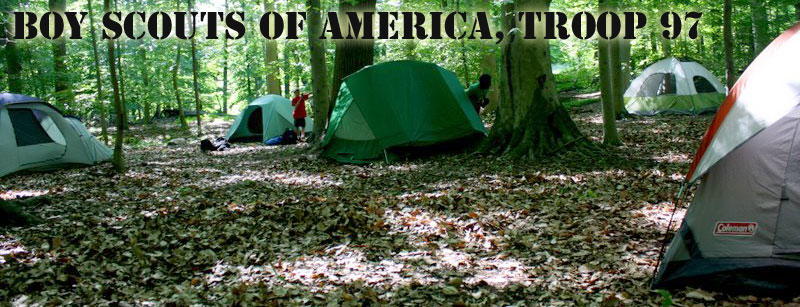Backpacking Basics
The Troop works on backpacking basics during meetings and events. for more information on Backpacking Skills there are lots of sites with great information.
Section Hiker
Here is one that is written by a very experienced outdoorsman and a scoutmaster in the northeast. https://sectionhiker.com/category/backpacking-skills/backpacks-packing/
*Have other resources to suggest? Contact the troop webmaster!
Be sure to see “choosing a Tent” page too!
Choosing a Backpack
There are many choices in backpacks including used backpacks, ‘inexpensive’ backpacks and borrowed backpacks. Talk to your cousin in Colorado or the aunt that went hiking that one time and then put the equipment in a closet. Searching on Craigslist can be fruitful too. You don’t have to break the bank for a brand new bag.
Keep in mind that for most trips the Troop does basic overnighting for short hiking/backpacking trips (2-20 miles). Your backpack doesn’t have to be perfect, but it should fit relatively well (size, volume)
Backpacks can have large, medium or even small capacity. They can be tall or short, one pocket or many. The good news is pretty much anything made by a well-known name in the last 5-15 years would be a fine candidate for a first backpack. However there are a couple of keys to check when selecting a backpack. The following is a slightly edited snippet from Backpacking Light. This article speaks to Scout packs directly.
https://backpackinglight.com/what_a_scout_needs_for_backpacking_part_1/
1. Size – Packs are sized to correspond to a person’s torso size, and vary from one manufacturer to another. Though there is no true standard in pack sizing, at least some effort is made to follow torso sizing, so having that accurately measured is important. You can go online for instructions; REI and Backpacking.com have good videos on how to measure for a pack. Pack sizes can range from XS to XL, depending on the manufacturer. If women’s or youth sizes are offered, those may be a better fit to a Scout’s body, and women’s packs often have more closely spaced shoulder straps (helpful for smaller Scouts). Just don’t tell the boy it’s a women’s pack, and he’ll never know. I have seen many a macho boy wear a women’s pack unknowingly, thinking they were the top stud.
[Scoutmaster Notes] – Many packs now come with adjustable torsos to grow with a Scout or allow for easier ‘hand-me-down’ scenarios. But the scout still needs to be able to fit in the general range.
2. Volume – If you have pared down your equipment, you won’t need a large pack. A small volume pack will also encourage your Scout to bring less, saving weight. For weekend trips an optimum volume would be between 45 liters and 65 liters. For a first pack you (young scout) would generally not need to look at anything larger than ~70 liters. It is best to get most of your Scout’s other gear before you purchase a pack, because the volume needed will be dictated by the size of the gear to fit in the pack. Don’t purchase a pack with such a small volume that you must strap or dangle things from it. It seems like every troop has someone who does this, and it invariably brings to mind the classic idea of a hillbilly, bobbing down the trail, clanking. Everything should fit inside the pack with the exception of maybe a sleeping pad, rolled tightly under the pack lid.
[Scoutmaster Notes] – Almost everything on the market is a fine internal-frame backpack. As long as it is a recently made (last 5-15 years) name brand in good condition it will likely suit the needs of the weekend warrior. Scouts going on longer treks such as Philmont would likely need to be more selective.
OK – so now you have a pack in hand.
3. Fitting – Below is a quick video and some simple information about trying on a pack.
[Scoutmaster Notes] – Note in the video how the straps fit – this is an indication that the backpack is approx. the right length for your scout. If the pack has an adjustable torso then move it around to find the right fit. If the pack does not have an adjustable torso then the fit needs to be correct the first time.
FITTING A BACKPACK (https://youtu.be/pnLCM_3RjuA)
[Scoutmaster Notes] – Final thoughts: Take the time to get a pack fitting and see what it’s like to put some weight on your back. You can ask your Troop Leadership for a demonstration and for a professional, and possibly best, fit visit REI in Conshohocken or King of Prussia. This hands on information can guide you on your first backpack purchase (be it from a store or from a neighbor).
Fitting Guides
Here are some more basic tips about fitting a backpack.
https://sectionhiker.com/how-to-fit-a-backpack/
video https://youtu.be/X258hs7HHaw
Manufacturers and Discounts
Looking around – new or used: Look for a name brand and you’ll likely be satisfied with the result (make sure of the fit!)
Top Manufacturers available at EMS and REI
Osprey
Alps Mountaineering**
Mountain Gear
The North Face
Gregory
Kelty
Mountainsmith
REI (own brand)
Discounts
A number of sites may have ‘scout’ discounts. Alps Mountaineering has a permanent Scout Price List that offers a deep discount that will match some of the best sales during the year. Ask a scoutmaster for a price list for comparison.
